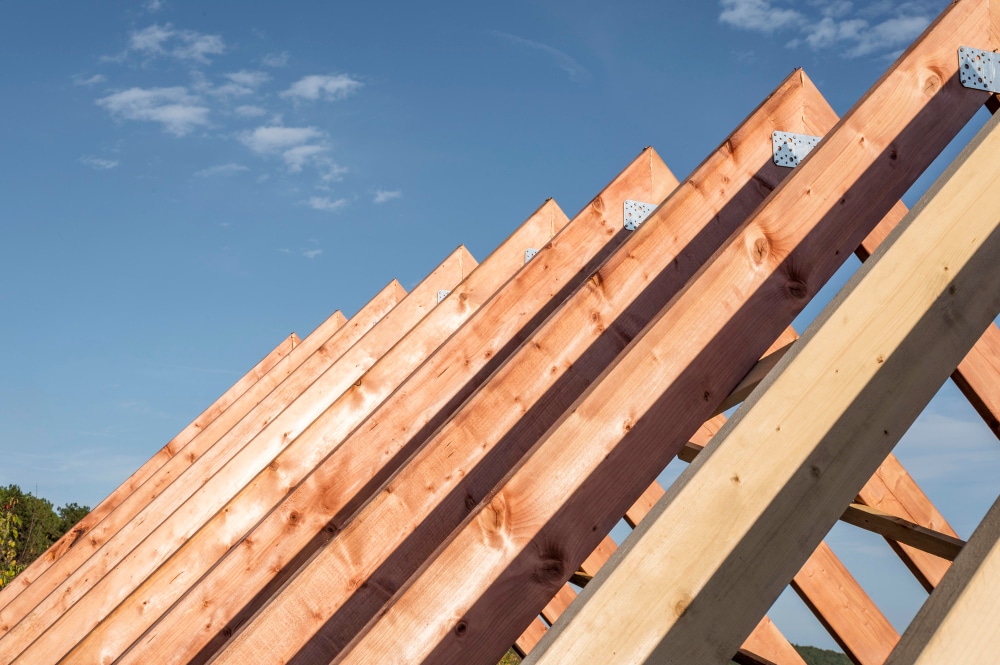Wood roof systems are gaining popularity for their environmental benefits. As an eco-friendly choice, wood roofs offer many advantages for homeowners who want to make sustainable decisions. Understanding these benefits can help you decide if a wood roof is right for your home.
One significant benefit of wood roofs is that they come from a renewable and sustainable resource. Trees can be replanted, ensuring a continuous supply of wood. This makes wood a much greener option compared to non-renewable materials like metal or asphalt.
Another key advantage is the energy efficiency that wood roofs provide. Wood naturally insulates, helping to keep homes warm in the winter and cool in the summer. This can lead to lower energy bills and a reduced carbon footprint.
Additionally, wood roof systems play a role in carbon sequestration. Trees absorb carbon dioxide as they grow, storing it in the wood. When used in roofing, this carbon remains stored, helping to reduce greenhouse gas emissions. At the end of their life, wood roofs can often be recycled, minimizing waste and contributing further to environmental sustainability.
Choosing a wood roof for your home means making a positive impact on both your energy use and the environment. Let’s explore more about the environmental benefits of residential wood roof systems.
Renewable and Sustainable Resource
Wood roofs are an excellent choice because wood is a renewable resource. Trees, unlike some other building materials, can be replanted and grown again. This cycle ensures a never-ending supply of wood without depleting natural resources. When managed responsibly, forests can provide wood indefinitely.
Moreover, sustainable forestry practices ensure that wood is harvested in ways that protect the forest ecosystem. This means planting new trees to replace those that are cut down. Responsible forestry also involves protecting wildlife habitats and maintaining water quality. By choosing wood from sustainably managed forests, homeowners support these eco-friendly practices.
Wood roofs also require less energy to produce compared to materials like metal or concrete. The process of turning trees into roofing materials uses fewer fossil fuels and emits less carbon dioxide. This lower energy consumption makes wood a more environmentally friendly option from the start of the production process.
Energy Efficiency of Wood Roofs
Wood roofs are naturally good at insulating. Insulation helps keep the inside temperature of your home steady. In the winter, a wood roof helps keep heat inside the house. In the summer, it helps keep the house cool. This means your heating and cooling systems do not have to work as hard.
A well-insulated home uses less energy. When your air conditioner or heater does not run as much, you save money on energy bills. This also means your home is using less fossil fuel-generated energy, which reduces your carbon footprint.
Another benefit is that wood roofs can be combined with other eco-friendly materials for even better insulation. You can add an extra layer of insulation beneath the wood shingles. Doing this improves the energy efficiency of your home even more. This makes wood roofs a smart choice for environmentally conscious homeowners.
Additionally, wood roofs can work well with ventilation systems. Proper ventilation is important for reducing heat build-up in the summer. A cooler attic space means lower cooling costs for your home. This combination of natural insulation and effective ventilation helps maintain a comfortable living environment year-round.
Carbon Sequestration and Reduced Emissions
Wood roofs play a crucial role in reducing carbon emissions. Trees naturally absorb carbon dioxide from the atmosphere during their growth process. This carbon remains stored in the wood, effectively removing it from the environment for the lifespan of the roof. By using wood for roofing, we effectively “lock” this carbon away, helping to mitigate climate change.
Additionally, the production of wood roofing materials generates fewer greenhouse gases compared to other roofing materials like metal or asphalt. Manufacturing wood products requires less energy and results in lower carbon emissions. This outcomes in a smaller carbon footprint associated with wood roofing systems.
The ongoing carbon storage in wood roofs provides long-term environmental benefits. As long as the wood remains in use, the carbon stays trapped, contributing to lower overall emissions. Choosing wood roofs helps in the fight against global warming and supports a healthier planet.
End-of-Life and Recycling Benefits
One of the standout benefits of wood roofs is their recyclability at the end of their lifecycle. Unlike some roofing materials that end up in landfills, wood shingles can be repurposed or recycled. This minimizes waste and reduces the environmental impact associated with the disposal of roofing materials.
When it’s time to replace a wood roof, the old wood can be used in various ways. It can be chipped and used as mulch for landscaping or processed and used in the production of wood-based products like particleboard. These recycling options help ensure that the material continues to be useful, even beyond its initial purpose as a roofing material.
Moreover, the biodegradable nature of wood means it breaks down naturally if it does end up in a landfill. This reduces the long-term environmental impact compared to non-biodegradable materials like metal or plastic. Opting for a wood roof sets a positive example of sustainability, showing that it’s possible to make eco-friendly choices that benefit both the home and the environment.
Conclusion
Wood roofs offer numerous environmental benefits that make them an excellent choice for conscientious homeowners. Their renewable nature, energy efficiency, and role in carbon sequestration contribute to a greener planet. The recyclability of wood roofs ensures that even at the end of their life, they continue to support sustainability efforts.
Choosing a wood roof means you are making an environmentally responsible decision. The combined benefits of durability, energy savings, and reduced carbon footprint contribute to a more sustainable lifestyle. For those interested in reducing their environmental impact while maintaining a beautiful and efficient home, wood roofing systems are a smart option.
If you are considering a wood roof for your home, contact Mike Huddleston Roofing Systems. Our team is experienced in providing eco-friendly roofing solutions that match your needs and environmental goals. Let us help you make the best choice for your home and the planet.

